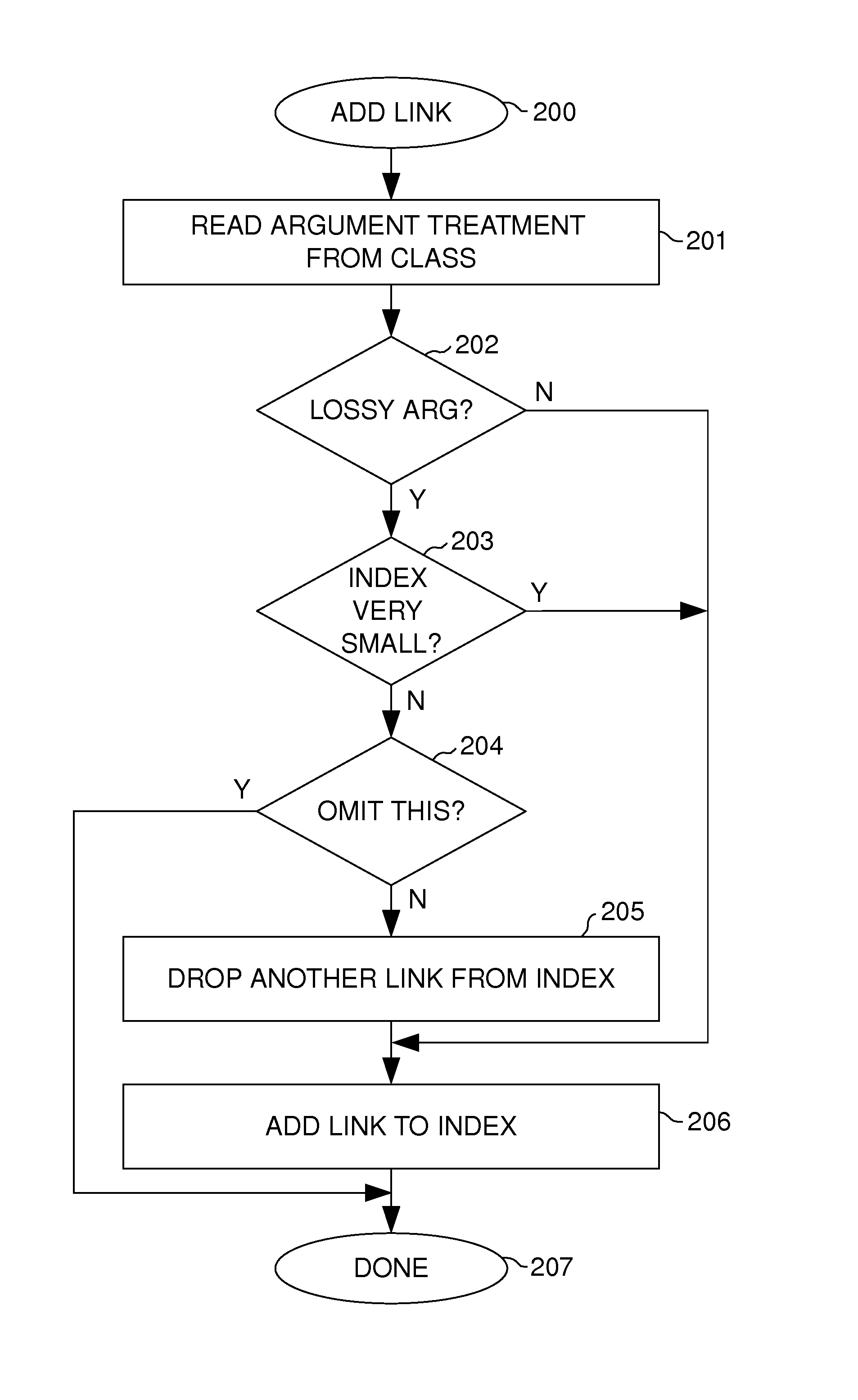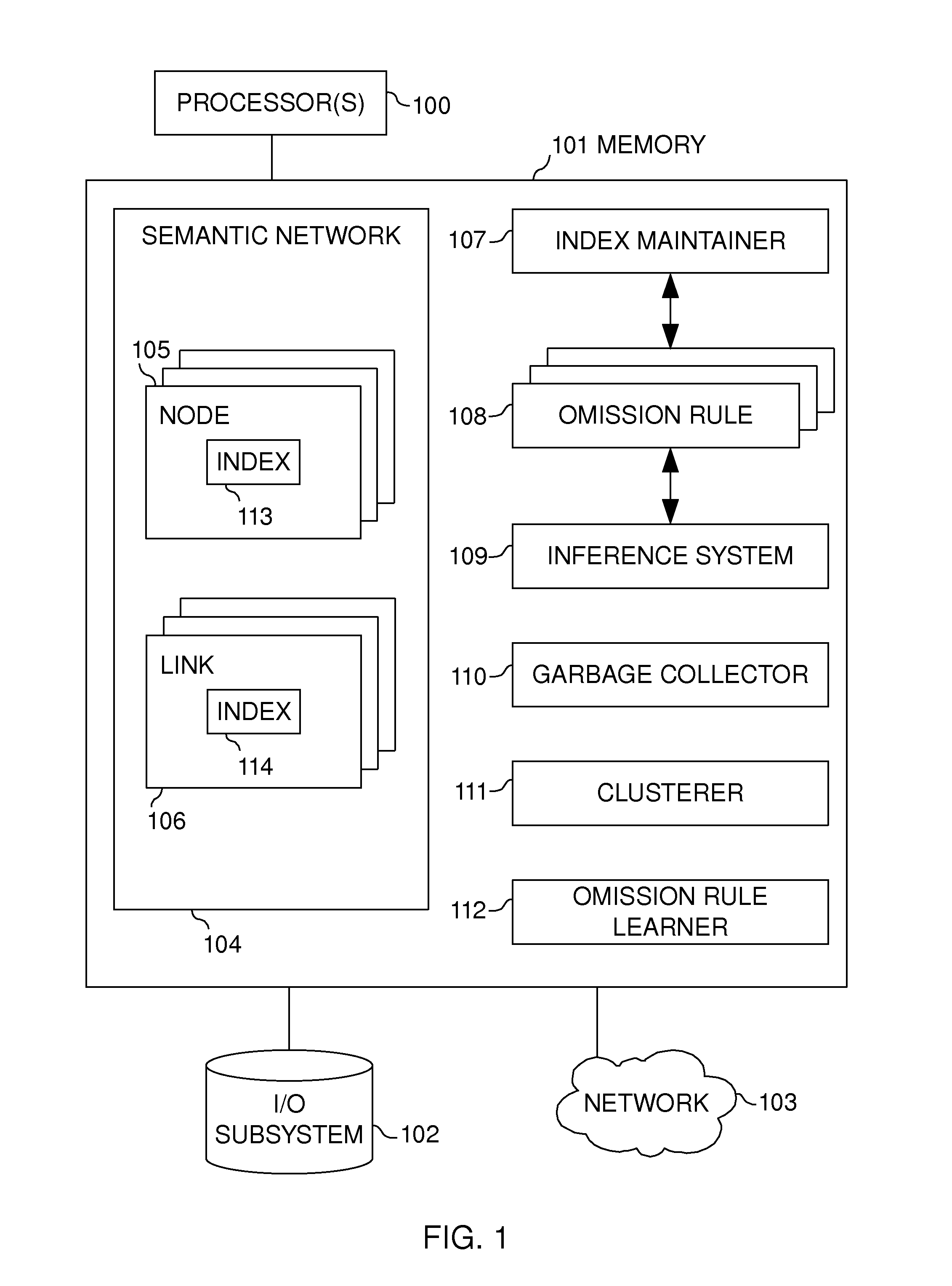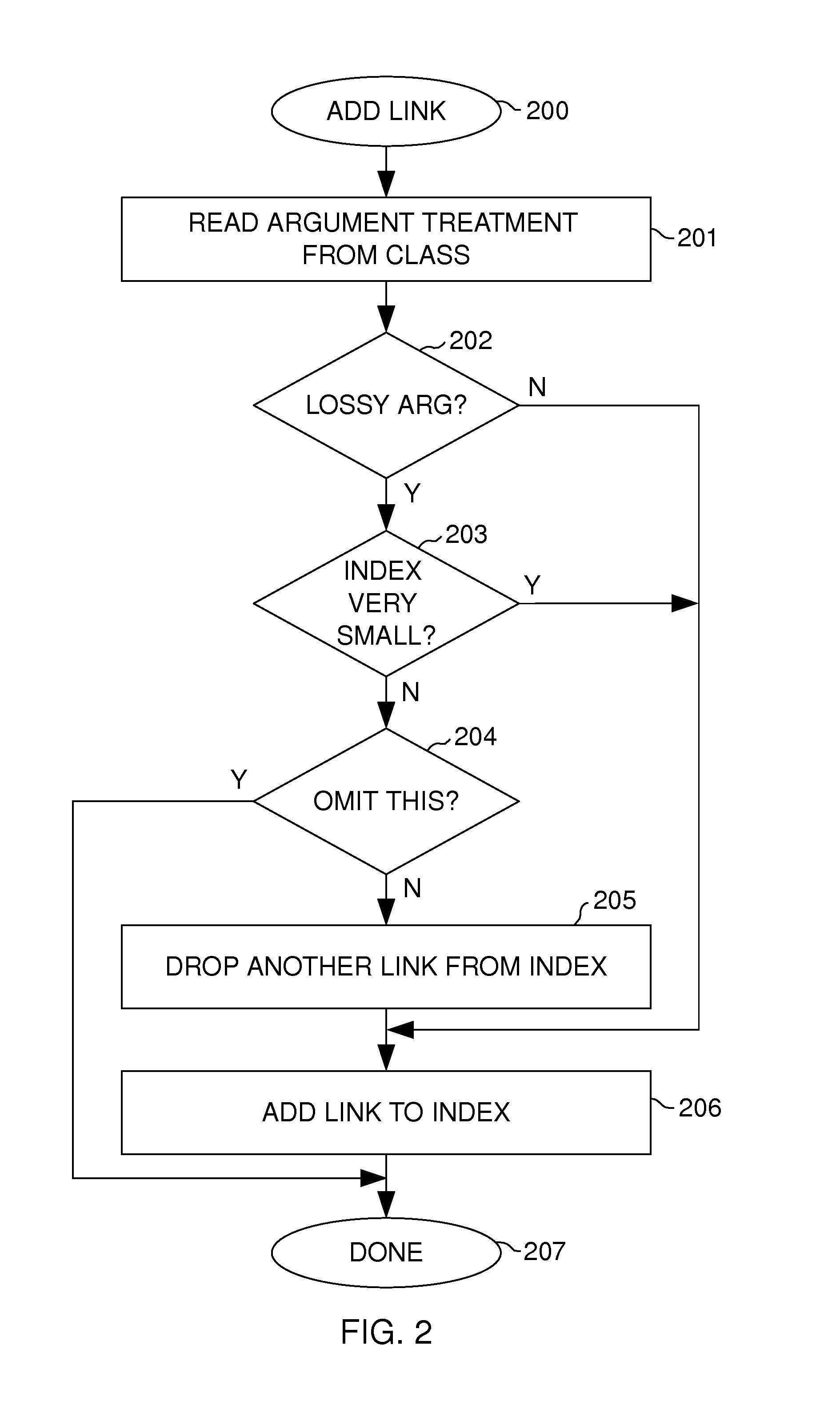Semantic Network with Selective Indexing
- Summary
- Abstract
- Description
- Claims
- Application Information
AI Technical Summary
Benefits of technology
Problems solved by technology
Method used
Image
Examples
Embodiment Construction
[0031]It is to be understood that the aspects and embodiments of the invention described herein may be used in any combination with each other. Several of the aspects and embodiments may be combined together to form a further embodiment of the invention, and not all features, elements, or characteristics of an embodiment necessarily appear in other embodiments. A method, a computer, or a computer program product which is an aspect of the invention may comprise any number of the embodiments or elements of the invention described herein. Separate references to “an embodiment” or “one embodiment” refer to particular embodiments or classes of embodiments (possibly different embodiments in each case), not necessarily all possible embodiments of the invention. Where an element is specified, the intention is that more than one such element could also be present. First, second, etc., entities may or may not refer to the same entity.
[0032]FIG. 1 illustrates a computer according to an embodim...
PUM
 Login to View More
Login to View More Abstract
Description
Claims
Application Information
 Login to View More
Login to View More - R&D
- Intellectual Property
- Life Sciences
- Materials
- Tech Scout
- Unparalleled Data Quality
- Higher Quality Content
- 60% Fewer Hallucinations
Browse by: Latest US Patents, China's latest patents, Technical Efficacy Thesaurus, Application Domain, Technology Topic, Popular Technical Reports.
© 2025 PatSnap. All rights reserved.Legal|Privacy policy|Modern Slavery Act Transparency Statement|Sitemap|About US| Contact US: help@patsnap.com



